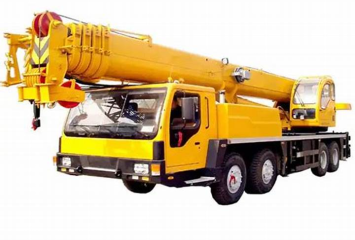

This training course is designed to provide participants with the necessary skills and knowledge to effectively inspect mobile cranes. Participants will gain an understanding of crane components, inspection procedures, and regulatory standards, ensuring they can identify potential hazards and ensure safe operation. This course includes both theoretical learning and practical hands-on training to ensure participants can conduct thorough and compliant crane inspections.
Understand crane operation: Gain an in-depth understanding of mobile crane functions and key components.
Perform routine inspections: Learn how to carry out detailed inspections of mobile cranes based on manufacturer specifications and regulatory standards.
Identify wear, damage, and safety issues: Develop the ability to recognize potential safety hazards, wear and tear, and defective components that may affect crane performance.
Comply with industry standards: Understand relevant safety and regulatory requirements, including OSHA, ASME, and local regulations related to mobile cranes.
Document inspections: Learn how to properly document crane inspections, including maintenance records, issue identification, and corrective actions taken.
Improve safety practices: Enhance workplace safety by preventing accidents and ensuring cranes are ready for safe operation.
Introduction to Mobile Cranes
Types of mobile cranes (e.g., truck-mounted, crawler, all-terrain)
Components and functions of a mobile crane
Basic crane terminology
Regulatory Standards and Best Practices
Overview of OSHA (Occupational Safety and Health Administration) regulations
ASME (American Society of Mechanical Engineers) standards
Local and international crane inspection requirements
Crane Inspection Procedures
Pre-operation inspections
Daily, weekly, and monthly inspection checklists
Structural and mechanical inspection areas (e.g., boom, wire rope, winches)
Hydraulic system checks and safety devices
Identifying Wear and Damage
Visual inspection techniques for detecting wear and damage
Identifying potential safety risks (e.g., cracks, corrosion, loose bolts)
Understanding load charts and how they relate to safe operation
Crane Safety Systems and Controls
Safety devices: overload protection, limit switches, anti-two-block systems
Operator cabin checks and visibility requirements
Warning and alarm systems
Maintenance and Reporting
Proper maintenance procedures for mobile cranes
Documenting inspection results
Reporting defects and corrective action protocols
Recordkeeping requirements for compliance
Practical Inspection Exercises
Hands-on inspection of real mobile cranes (or crane simulators)
Group-based inspection activities to identify potential issues
Review and discussion of findings
Conclusion and Certification
Review of key concepts
Final assessment (written and practical)
Certification of completion
Crane Operators
Maintenance Personnel
Safety Officers
Supervisors and Managers
Construction and Manufacturing Professionals